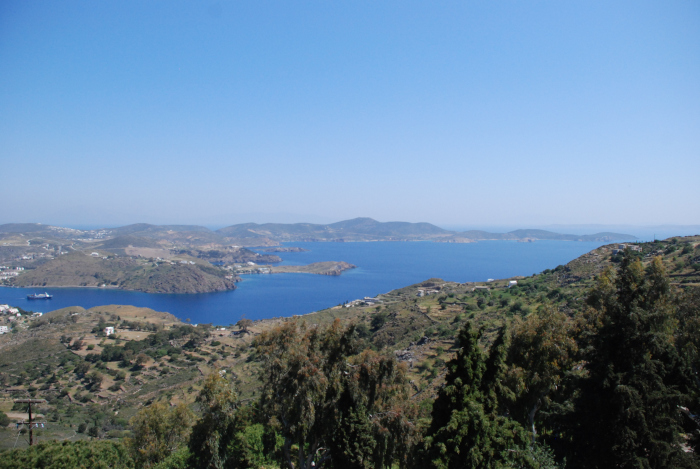Area: 34 sq.km
Permanent population 3,053 inhabitants
Patmos is known as the city of the Apocalypse. Its name is believed to have come from a corruption of the name of Mount Latras in Caria, Asia Minor. Parallel to Mythology, Patmos is associated with the passage through the island of the matricide Orestes. Patmos was first colonized by Cares (3rd millennium BC) according to the archaeological finds in the Kasteli area. The first Greek inhabitants of the island are considered to be the Ionians and later the Dorians. In the 2nd BC h. the Romans turn the island, deserted by pirate plunders, into a place of exile. Exiled in Patmos was the Apostle John (95 AD) who, in an environment of evocative isolation and ascetic devotion to the divine, wrote the holy book of the Apocalypse. From the 6th to the 9th AD h. Patmos is once again desolated by pirate depredations. In the 11th century it is received by Saint Christodoulos the Latin, a distinguished scholar of the Church, who founds the Monastery of Saint John the Theologian, with an imperial chrysobull for tax exemption and the right to keep a ship, something particularly privileged for the time. The first residential core of the island developed around the Monastery, created at the beginning of the 13th century. 1622 is marked by the occupation of Rhodes by the Turks. The Venetian invasion of Patmos took place in 1659 and the Monastery was looted. At the end of the 18th c. Patmos enters a new period of prosperity and in 1713 the famous Patmiada School is founded by Makarios Kalogeros, a spiritual nursery for distinguished people of letters and an incubator for national leaders. The 19th century Patmos now stands economically and socially strong and opens more easily to ideological and architectural European influences (eg neoclassicism). It was incorporated into Greece, freed from Italian rule in 1948.
In 95 AD it is the most important date for Patmos when John the Evangelist, expelled from Ephesus, is exiled there. During his stay here he writes the Apocalypse.
In 1088 the monk Christodoulos the Latin found it deserted and founded the Monastery in honor of the Evangelist.
In 1832, the Dodecanese were handed over to the Turks by treaty.
In 1912 the period of the Italian Occupation begins.
In 1947 they were integrated into Greece.
In 1981, the Greek Parliament passed a law officially declaring it a Holy Island.
In 1999, Patmos was included in the UNESCO World Heritage Sites.
Editor: Fotini Anastasopoulou
